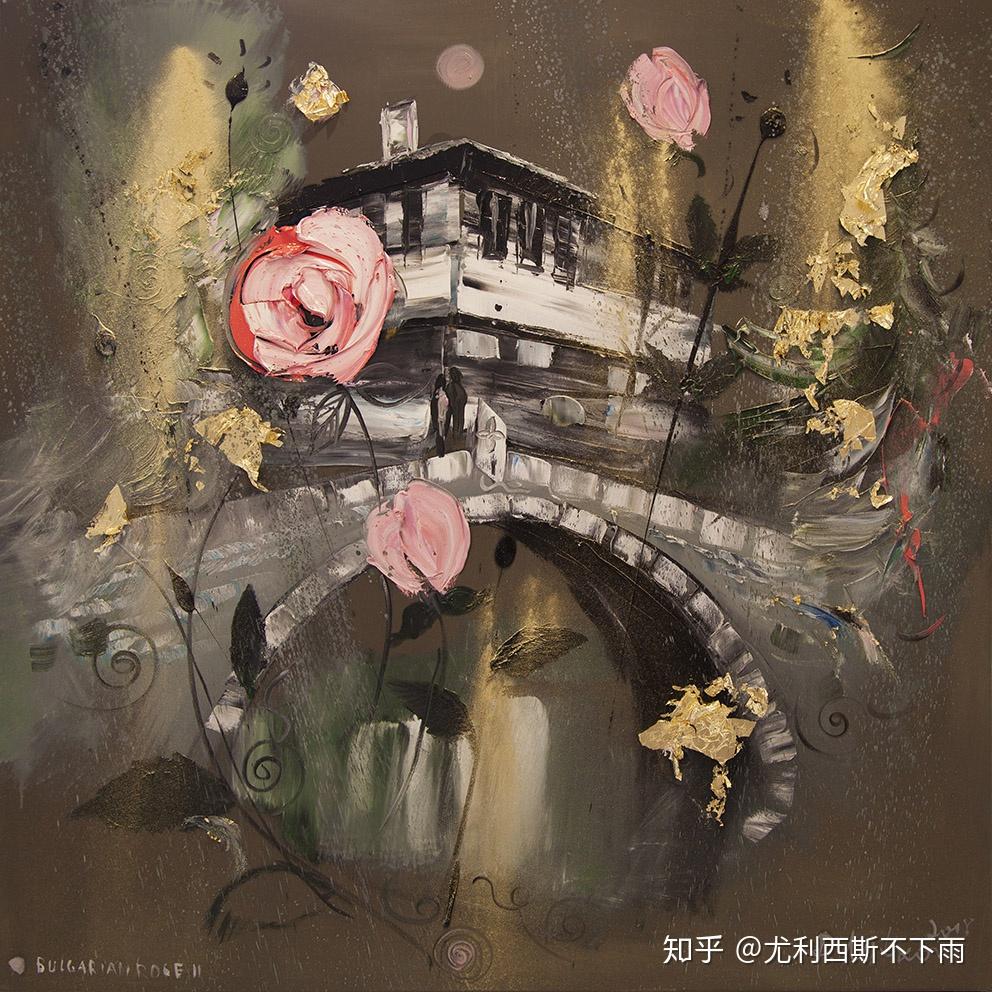ARedRedRoseRobertBurns苏格兰民族诗人罗伯特·彭斯(RobertBurns,1759——1796)...





A Red Red Rose
Robert Burns
苏格兰民族诗人罗伯特·彭斯(Robert Burns,1759——1796)是英国文学史上浪漫主义诗歌的卓越先驱,他一生创作颇丰,绝大部分诗歌都从苏格兰方言和歌谣中汲取灵感和养分。彭斯以诚挚的情感生动描写苏格兰乡村生活,其诗作独具民族特色且极富艺术魅力。
克斯蒂·布莱尔(Kirstie Blair)曾坦言:“彭斯的诗歌展示了他的创作天赋,他将讽刺与真诚、玩世不恭与真挚情感、犀利的社会评论与理想主义完美地结合起来。他写的歌曲中词和曲配合绝妙,他的诗采用的是易于记忆且人们熟悉的形式。他的很多诗和歌很快就成了苏格兰文学和民歌传统的典范。”彭斯的诗歌在世界范围内广泛传播,自1908年进人中国,受到“五四”新文学运动的助推,广大研究学者和诗歌爱好者相继对其进行译介。他的爱情诗是其抒情诗中最具感染力的,语言生动形象,富于节奏感和韵律美。


A Red, Red Rose
O my Luve is like a red, red rose
That’s newly sprung in June;
O my Luve is like the melody
That’s sweetly played in tune.
So fair art thou, my bonnie lass,
So deep in luve am I;
And I will luve thee still, my Dear,
Till a’ the seas gang dry.
Till a’ the seas gang dry, my Dear,
And the rocks melt wi’ the sun;
I will love thee still, my Dear,
While the sands o’ life shall run.
And fare thee weel, my only luve!
And fare thee weel awhile!
And I will come again, my luve,
Though it were ten thousand mile.


写作背景
《一朵红红的玫瑰》是著名诗人罗伯特·彭斯根据苏格兰民谣创作的优秀抒情短诗,收录于1786年出版的《苏格兰方言诗集》,诗歌自发表以来,在全世界广为流传,经久不衰。全诗以意象火红玫瑰开头,鲜明形象地展示了恋人的美丽,表达了诗人对真挚爱情的热烈歌颂,同时也反映了劳动者们朴实而深厚的情感。
评论家们高度评价了此篇诗作。纪晓洁从功能文体学的视角分析诗歌的情感表达方式和语言特点,从而进一步加深对诗歌的理解和欣赏的效果。孟令新等从修辞的角度解读了诗中强烈而真挚的爱情。有的学者指出彭斯用简洁明快的语言表达了自己对所爱之人纯真的爱恋及其朴素、纯洁的爱情观:无私、永恒、相濡以沫。
可见,尽管国内评论家们对《一朵红红的玫瑰》从不同的角度进行解读,但他们大多数都品读到作品中蕴含的深刻爱情。彭斯采用简洁凝练的语言、意蕴丰富的意象、生动形象的修辞使得诗歌散发出无穷的语言魅力。


意象
《一朵红红的玫瑰》全诗分为四节,共十六行。此诗语言平实简练、感情炽热、朗朗上口,富有苏格兰民谣的特点。彭斯使用了苏格兰方言进行创作。“luve”同于现代英语“love”;“bonnie”意为健康的,美丽的,可爱的,可人的;“lass”指年轻未婚女子,姑娘(多数用于非正式对少女的称呼);“gang”等同于“go”。苏格兰方言,朴实无华,唤起了普通大众读者对纯真爱情的渴望。
为了用简洁的语言表达充沛的情感,给读者留下深刻的印象,诗人用了许多诗歌用语,play'd,a’,wi’,o',fare-thee-weel,tho'分别为标准英语played,all,with,of,bid farewell to thee,though。此外,诗歌中还有大量古英语的印记。古英语art,melodie,thou,thee等同于现代英语are,melody,you(主格),you(宾格)。
在格律上,此诗是用抑扬格写成的。奇数行为抑扬格四音步,偶数行为抑扬格三音步。在韵律上,每一节诗歌第二行和第四行押韵,读起来抑扬顿挫,节奏感强。后两节诗的第一行和第三行末尾用了同一个词,更大地增强了诗歌的韵律感。即前两节诗歌的韵脚为abcb (rose, June, melodie, tune;lass, I, Dear, dry),而后两行诗歌的韵脚为abab (Dear, sun, Dear, run;Luve, while, Luve, mile)。
韵律感的逐步加强让我们感受到诗人爱得诚恳、坚定、至死不渝。我们注意到,“Dear” “Love”两个词用的是大写,体现出恋人在诗人的眼里是不可取代的,表达了“唯一”“重要”的内涵。此诗简洁凝练,铿锵有力,和谐悦耳,诗人情感强烈,语言生动,极富感染力,是浪漫主义诗歌中的隽永篇章。


玫瑰象征着爱情。诗歌第一句“O,my luve’s like a red, red rose, That’s newly sprung in June.”将爱人比作一朵在六月里刚开的红玫瑰,这不是一般的玫瑰花,这朵红红的玫瑰刚刚开好,娇艳欲滴,惹人怜爱。透过这朵玫瑰,我们仿佛可以看见他恋人的模样,这是一个灵动的少女,脸颊红润,亭亭玉立,婀娜多姿,气质不俗。
第二句“O,my luve’s like the melodie, That’s sweetly play’d in tune.”此句诗人将恋人比喻成一首甜美的乐曲。如果红玫瑰是从视角描绘爱人,那么甜美的乐曲则是从听觉上告知读者这个姑娘有着天籁之音,温婉甜美。与这样的姑娘在一起,仿佛可以忘却世间所有的烦恼和痛苦,唯有快乐和宁静相伴。
此后,诗人将意象转为广阔的大海和坚固的岩石。“And I will luve thee still, my Dear, Till a' the seas gang dry. Till a'the seas gang dry, my Dear, And the rocks melt wi' the sun!”诗人用海枯石烂表达对恋人的爱是坚定不动摇的。整个宇宙可以变化甚至被摧毁,唯有爱情是永恒不变的。
“O,I will luve thee still, my Dear, While the sands o' life shall run.”此句诗人用沙漏来形容生命,他对恋人的爱会一直持续直至生命耗尽的那一刻。可以看出,诗人的爱情是炽热的、忠贞的、深刻且恒久的。诗人通过玫瑰、乐曲、大海、岩石、沙漏等意象把我们带入到一个美妙的意境中,在读者心中引起强烈共鸣,艺术效果是同一时期其他诗歌无法企及的。


在《一朵红红的玫瑰》中,彭斯运用了比喻、夸张、重复、头韵等修辞手法,语言生动形象,给读者留下了深刻的印象。
诗歌开篇把恋人比作红红的玫瑰和甜美的乐曲,形象的比喻让读者感觉到眼前立刻出现一位花季少女,青春、热情、甜美、芬芳、秀丽。诗人对恋人的美好描述委婉间接地传达了他的爱慕之情。这位姑娘这般美好,温婉含蓄的诗句不够表达诗人的浓烈爱意,诗人如洪水一般汹涌奔腾的爱情需要用直抒胸襟的方式来表达。
接下来的诗句诗人用夸张的手法表达了自己至死不渝的爱。诗人会永远地爱着他的恋人,直到“四海枯竭,直到太阳把岩石烧裂”。我们知道,现实中这是不可能发生的。海水不会干涸,太阳也不能将岩石融化。这种夸张的手法使得空间拉大了,时间延长了,爱情的主题得到了深化。
诗歌还有一个显而易见的修辞手法——重复。重复的作用在于强调突出某个事物或者情感,抓住读者的注意力,以留下深刻的挥之不去的印象。A red,red rose当中的red进行了重复,增加了跌宕起伏的节奏感,读起来朗朗上口。luve一词在诗中反复出现了七次,并没有给人一种累赘的感觉,反倒是强调主题,突出了诗人对恋人的爱如此热切如此深刻。
此外,“I will luve thee still”,“Till a' the seas gang dry”两句重复体现了诗人永不变心的承诺,使读者也为之动容。诗歌最后诗人和恋人告别,重复的“fare thee weel”体现了诗人极不情愿离开恋人而不得不离开片刻的依依惜别之情。
诗歌还使用了头韵,诗句中luve和like均以辅音[l]开头的,red和rose以[r]开头的,weel和while以[w]开头。头韵的使用使诗歌具有音乐美和整齐美,声情交融,音义一体,具有很强的语言表现力和感染力。诗人用修辞手法生动地表达了自己对恋人真切永恒的爱恋,在诗人与读者之间架起一座桥梁,直通读者内心,使其感同身受。


Themes
“A Red, Red Rose” begins by describing the speaker’s love for a beloved with images that are beautiful but not necessarily long-lasting. The speaker then affirms, however, that his or her love will outlast human life itself. Through the speaker’s paradoxical (but passionate) claims, the poem argues that true love is both constantly renewing and completely unchangeable.
The speaker begins by describing love in terms that are beautiful but that don’t immediately suggest permanence. The first lines compare the speaker’s love to “a red, red rose.” “Luve” could refer to the beloved, the person the speaker loves. It could also refer to the speaker’s feelings for this person. Saying the beloved is like a rose “newly sprung in June” emphasizes her beauty and youth. Meanwhile, saying that the speaker’s love for her is like a new rose implies that this is a new relationship, with all the freshness and excitement of a developing romance. Of course, a rose can only be “newly sprung” for a short time; June ends after thirty days, and flowers fade quickly. If the speaker’s love is just like a new rose, maybe it won’t last very long.
The speaker then says this love is like “a melody / That’s sweetly played in tune.” But again, instruments can go out of tune, just as flowers can fade. The newness and excitement of the speaker’s love initially make it seem somewhat unstable.
Then, however, the speaker goes on to emphasize how long this love will last. The speaker uses three images to measure how long these feelings of love will last: the seas going dry, the rocks melting, and the sands of life running out. These events could only occur after eons of time, if ever. It seems now that the speaker’s love, far from lasting only as long as a flower, will actually endure longer than human life. Although these conflicting descriptions of the speaker’s love sound like a paradox, the speaker continues to insist that true love really can embody these seemingly opposite qualities of newness and permanence.
In the final stanza, the speaker bids farewell to the beloved, as if the speaker is planning to leave on a journey. The beloved doesn’t need to worry, though, because the speaker promises to return, even if the journey is “ten thousand mile[s]” long. This promise implies that, just as long stretches of time could not exhaust the speaker’s love for the beloved, a long stretch of distance cannot keep the speaker from her. And the length of this journey now seems short—just “awhile”—compared to the near-infinite time the speaker’s love will last. It seems, then, that love like the speaker’s is powerful enough to make earthly obstacles (like physical distance) feel insignificant. That is, this love is reliable and constant, but it also feels fresh and exciting enough to adapt to changed circumstances. The moment of farewell in the final stanza highlights the speaker’s core argument: love that lasts forever is also love that allows for change over time.
也 许 你 还 喜 欢
英文诗选赏析 | Funeral Blues
英文诗选赏析 | In a Station of the Metro
英文诗选赏析 | Stopping by Woods on a Snowy Evening












如果认为本文对您有所帮助请赞助本站